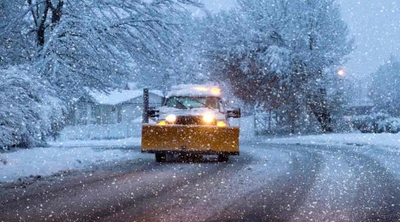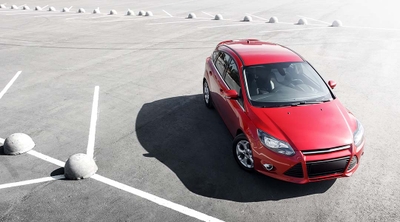5 tips for safe driving in the mountains
3 min read
Driving in the mountains can be as challenging as it is exhilarating, offering breathtaking vistas, twists, and turns. Taking on mountain driving requires careful preparation and expert driving skills. From choosing the best car to navigating steep inclines at night, learn tips for safe mountain driving.
1. Choose the best car for mountain driving
Your vehicle choice may greatly impact your driving experience. The best car for driving in the mountains typically has a powerful engine, good ground clearance, and reliable brakes. Additional essential features include adequate torque, the rotating force that the engine’s crankshaft produces, sturdy suspension, and brakes that won’t falter when tested. Consider an all-wheel-drive vehicle with ample horsepower to climb steep slopes, and ensure the tires are in excellent condition for optimum traction before you hit the mountain roads.
Examples of makes and models of vehicles best suited for mountain driving according to Autoseeks.com include:
- Jeep Grand Cherokee: Excellent traction and off-road capability, powerful engine, and responsive steering. Safety features include adaptive cruise control.
- Land Rover Range Rover: Advanced all-wheel drive, a Terrain Response system, a powerful engine, excellent handling, and suspension.
- Honda CRV: Plenty of power, a 2.4-liter engine with 184 hp, 180 lb.-ft of torque, and reliability to cruise up and down hills easily. All-wheel-drive system and 7.9 inches of ground clearance.
- Toyota Tacoma: Powerful, 2.7-liter, 4-cylinder, V6 engine with up to 278 hp. Popular choice for driving in the mountains.
- Subaru Outback: 2.4-liter, 4-cylinder, 175-hp engine with 174 lb.-ft of torque and all-wheel drive, plus an X-mode system that keeps the vehicle stable on rough terrain by automatically adjusting traction and power delivery.
2. How to drive up a mountain with an automatic transmission
Driving an automatic up a mountain requires careful attention to the car’s performance. Monitor the engine’s temperature; if your car overheats, pull over to let it cool down. Don’t hesitate to manually downshift if your vehicle struggles to maintain speed. Downshifting gives the engine more power when climbing.
3. How to drive down a mountain safely
When driving down a mountain, do not rely solely on your brakes to reduce speed, as this can cause them to overheat and fail. Instead, use engine braking by shifting into a lower gear to allow the engine to slow the vehicle down without over-using the brakes. Remember to take turns slowly and watch out for falling rocks, other debris on the road, and wildlife that could appear unexpectedly. Keep a safe distance from the vehicle in front of you to account for the increased stopping distance when traveling downhill. Discover more safe driving tips.
What gear is best for mountain driving?
On uphill and downhill driving, use a low gear, 1-3 on a manual transmission and L and 2 with an automatic. The lower gear gives the engine the power to maintain speed when driving uphill. On the downhill drive, the low gear keeps your speed low to preserve your brakes and avoid undue stress on the transmission.
4. Tips for driving in the mountains at night
Night driving adds an extra layer of complexity on a mountain road. Your visibility is limited, and the winding roads can be disorienting. Stay attentive and slow down to give yourself enough time to react to unexpected obstacles. Use your headlights effectively but switch to low beams when approaching oncoming traffic. Discover more driving etiquette tips.
5. Be prepared and stay alert
A driving adventure in the mountains may be the perfect opportunity to ensure that you’ve replenished your emergency road trip kit. Make sure you have water, snacks, a first-aid kit, and a flashlight. Bring a paper map of the area where you’ll be driving, as cell signals can be unpredictable in remote areas. Check the weather before heading out and avoid driving in extreme conditions but be prepared for a departure from the forecast. Take breaks if you feel fatigued, and always focus on the road. Prepare for the snow with these practical tips for winter driving conditions.
Driving in the mountains can be a rewarding experience for any motorist when you’re driving the right vehicle, you understand how to navigate the challenging terrain, and you’ve prepared for the unexpected.






